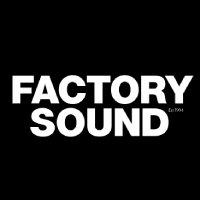The Tricolours Origin

The Tricolours Origin
Since 1908, the Eastern Suburbs District Rugby League Football Club has always worn Red, White and Blue - but few know the origin story - one which goes all the way back to the 1890s.
With rugby union's booming popularity at the turn of the 19th Century, a club in 1894 was established - Paddington Electorate - who donned the same Red, White and Blue as the Roosters do today.
As a heavy amount of transfers threatened to cripple the weaker clubs and strengthen the dominant sides in the competition, JC Davis, editor of The Referee, campaigned for a district competition. From there, the Eastern Suburbs Rugby Union Football Club was formed in 1900 - dominated by residents of Paddington and Woollahra.
The name Eastern Suburbs was once well known in the athletics and cricket fields, (but) had dropped out of the world of sport and indeed out of all others. It is now revived for football.
JC Davis Editor of 'The Referee', March 1900
A motivation to galvanize the community is believed to be the reason to establish many existing clubs into Eastern Suburbs, but the original committee moved to have the club adopt Paddington's Red, White and Blue scheme, which is still worn to this day.
As for the playing kit, it was decided that the jerseys worn would match those worn by Reverend Matthew Mullineux's Great Britain team that had toured Australia in 1899, which had a hooped design with a Red base and Blue and White consecutive stripes.
With Rugby League established in Australia in 1908, the Eastern Suburbs District Rugby League Football Club - like many clubs at the time - adopted their rugby union counterpart's title, colours and jersey strip.
There were, however, two varieties of the strip in the formative years of the Club, the one with a Red dominated strip that mimicked 1899 touring Great Britain side, with the other being predominately Blue - both of which have been replicated in the Club's heritage strips over the years.
With rules and regulations still in their early stages, a number of team photos have been shown alternating between the two variants - and players wearing both strips in the same game - although it is commonly believed that the Red jersey with Blue and White smaller stripes is the primary one worn in the formative years before the Blue dominated the strip later on. The order of the stripes was also inconsistent.
The first occasion the Club was forced to change their regular strip was in mid-1920, as a shortage of dye meant that a Blue and White 'barred' jersey was worn, although Easts enjoyed a perfect record in their new colours as they won all four matches between Round 4 and Round 8 of that season.
In the mid-1940s, as the war-time effort led to a ration shortage, and the Club made their first official change in colour, this time to a light blue - now known as Bondi Blue - in their Wartime Jersey, which also marked the introduction of the famous 'V' design on the jersey.
Come 1954, Eastern Suburbs moved on from the striped Tricolours jersey to a brand-new design - the one we recognise most today - modelled on the same one as the French national team, which was announced in an official Club statement:
This coming 1954 season will see the players in a new style of jersey, fashioned mainly on the French jersey, with a few embellishments, but still retaining the colours of red, white and navy blue. Knickers will be white in lieu of blue whilst the socks will be hooped on the same pattern as the arm of the jersey.
Official Club Statement 1954
Ever since, there have been a number of different jersey patterns and designs with the advent of themed jersey including an emphasis on White in the numerous away kits which first appeared in 1982, with a number of pattern combinations particularly incorporated in the Anzac Day and Indigenous Jerseys.
The Club has also brought back the Tricolours as a Heritage Jersey on a number of occasions since the late 1990s, worn on a number of occasions in the Club's 100th Season in 2007 and Rugby League's Centenary in 2008 and through the 2010s, most recently in 2020.
While a number of jersey designs have made appearances with the iconic Rooster adorned on the chest, one thing that has always been consistent is the famous Red, White and Blue.

Sydney Roosters respect and honour the Traditional Custodians of the land and pay our respects to their Elders past, present and future. We acknowledge the stories, traditions and living cultures of Aboriginal and Torres Strait Islander peoples on the lands we meet, gather and play on.






